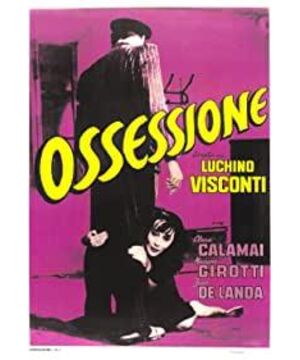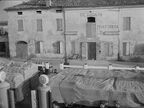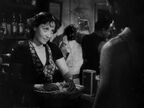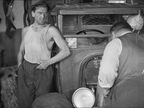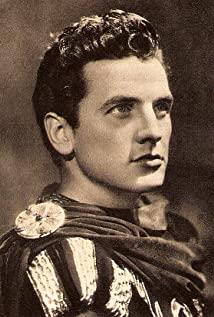The likes of Visconti and Santis opened the door to a new realism in the art of cinema in the numb society of Mussolini's political control, and its place in film history alone is enough to give 5 stars.
As far as the movie is concerned, the first half is very exciting, the techniques are delicate, the characters are full, and the progress of the plot is rhythmic and meaningful. But the second half lacks some meaning. It is full of entanglement between the hero and heroine and their inner struggle. The behavior of the characters becomes inexplicable, heading for madness and destruction. Or perhaps, it is precisely for this effect that it is so arranged.
The way the male protagonist appears is quite interesting. When he is driven out of the car, the camera gradually rises to show the panoramic view of the country pub, and then follows the characters all the way but avoids the face. Finally, we saw the female protagonist Jiwana's shaking legs from Kino's point of view. This is the heroine's first appearance, and the male protagonist's first appearance is dedicated to the female protagonist's perspective. A quick shot brings us and The heroine's eyes are all focused on Keno's face full of male hormones. Therefore, the main characters of these two films are endowed with the meaning of sexual desire from the beginning, and the fate of the characters is doomed here.
Such delicate character depictions abound in the first half. For example, in order to support the tavern owner, Jino secretly hid the parts of the truck; when the heroine began to tell her tragic fate, she walked to the corner of the room and sat down with an indifferent face. The scene highlighted the helplessness and loneliness of the characters; also in this scene , Although the male protagonist said he could understand the female protagonist, he actually stood far away and played with the conch shell. The difference between the two people's moods and pursuits has been revealed.
After Gino left, the encounter with Spano was also the finishing touch. The handling of the relationship between the two was romantic and devious and delicate. It once made people feel that a bright future was just around the corner. In fact, these two people should be the same and cherish each other, but Gino has been changed by the desire aroused by Jiwana, and we can't guess whether his obsession with Jiwana is love or not. In a word, this should be the Italian reality that Visconti wanted to show. Under the coercion of desire, Gino went out of control step by step. He said to Spano the words that Givana had used to reject him, "I don't want to wander around." , and then swung his fist at his best friend.
But is he sure he wants to settle down? Absolutely not. Before this day, he was still obsessed with trying to convince Jiwana to leave with him, numbing himself with alcohol. And after that day he really became lost, nostalgic for the days of freedom, then abandoned Jiwana for inexplicable reasons, and immediately ran to a new love.
It can be said that the story has gone into chaos and out of control since the murder of Kino. There is no so-called love between Kino and Jiwana, only conflict and drift away. In fact, I think the two of them actually have no love at all from beginning to end. The high probability is that there is a desire between two people who are dissatisfied with real life, and mistakenly think that they have caught a life-saving straw called love. The two men also insisted on defending their way of life.
After all, it was the child in Jiwana's womb who finally made Jino decide to reunite with Jiwana and fly away... This setting is too cliché and deliberate, and this film still reveals some influences of Hollywood narrative.
The same love tragedy is reminiscent of the Thai horror romance film "Eternal", but of course there are some similar thoughts on the relationship between love and desire, and the two films are mostly different.
Finally, I have to say something about the ingenuity of the film's camera movement, mise-en-scene and composition. At the beginning, I already mentioned the series of lens combinations when the male protagonist Keno appeared, and then the camera movement of Keno stealing parts was also very accurate. The ingenuity of the composition also lies in the arrangement of the background of the picture. For example, when Gino repairs the water pump, there is the door of the house in the background, and the dark door always seems to be there to beckon him; During the part, in the front and back shots of the dialogue between Jiwana and Gino, the background also shows the blurred Bougner and the priest respectively.
But these thought-provoking shots are scarce in the second half of the film, and part of the dullness of the second half lies in this. Of course, it is undeniable that Visconti's grasp of the picture is indeed beautiful. The matches that illuminate the body, the half-covering of the gauze curtain, and the light hitting the faces of the characters through the panes are all unique.
Tribute to the great Visconti director.
View more about Obsession reviews


